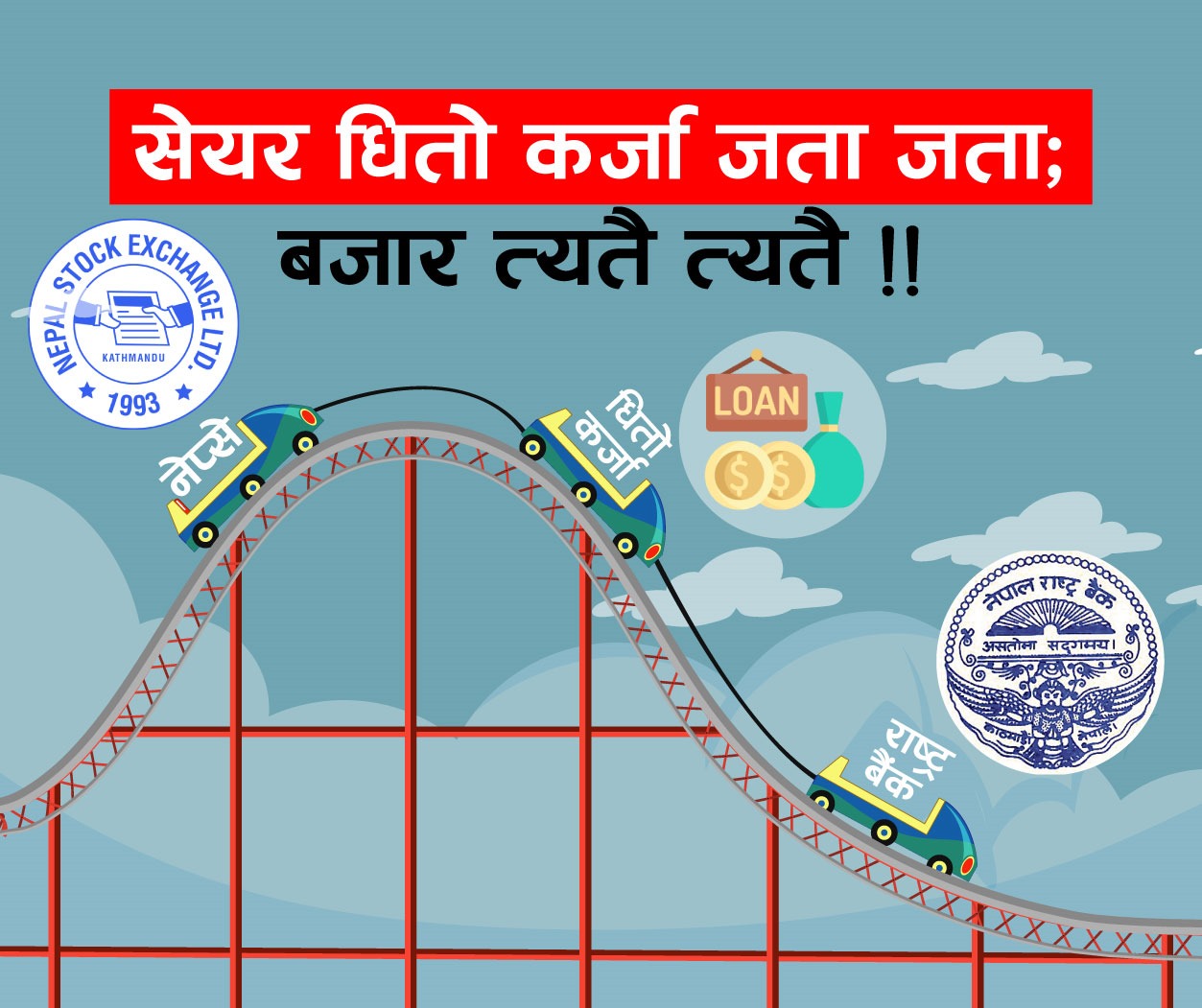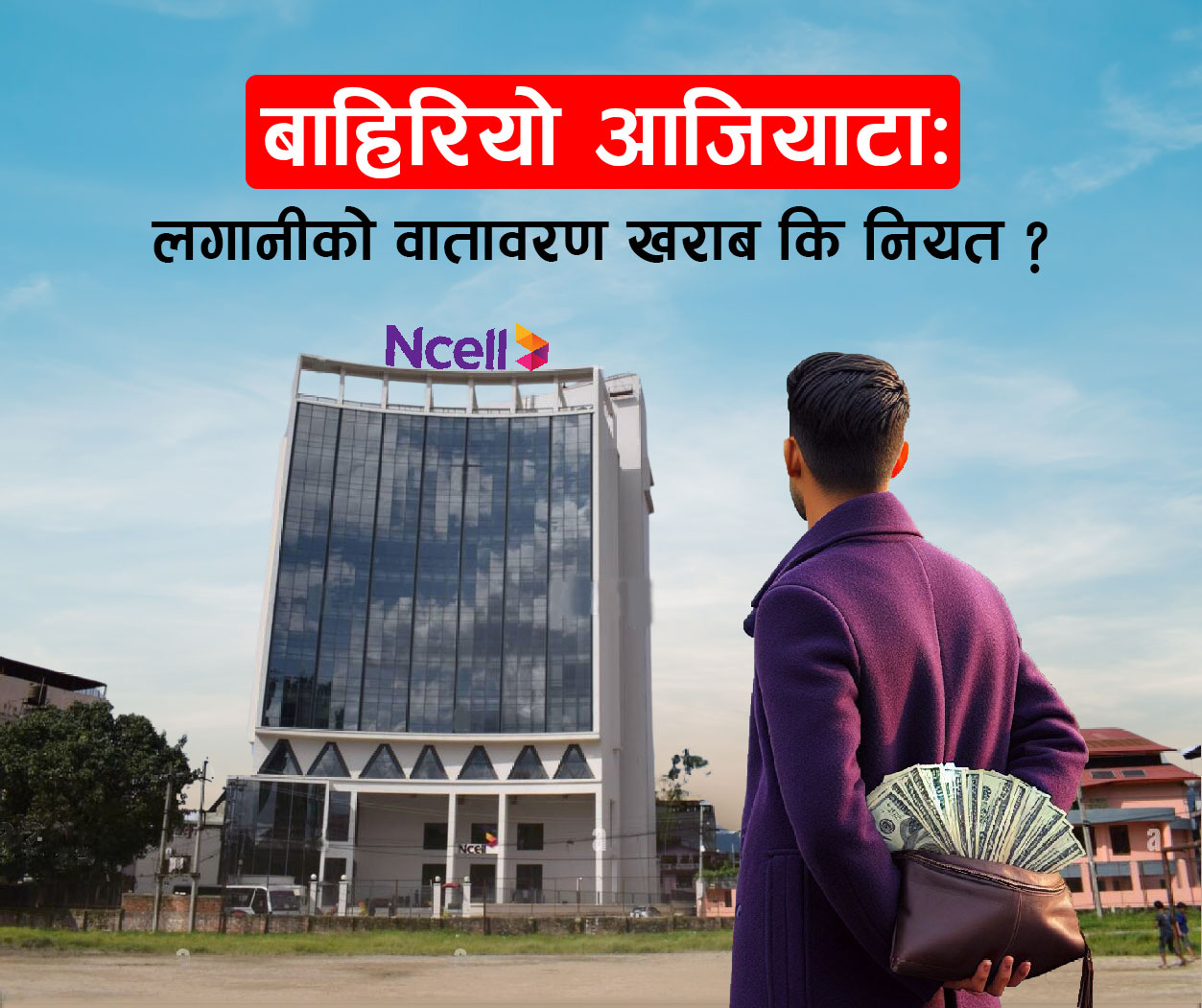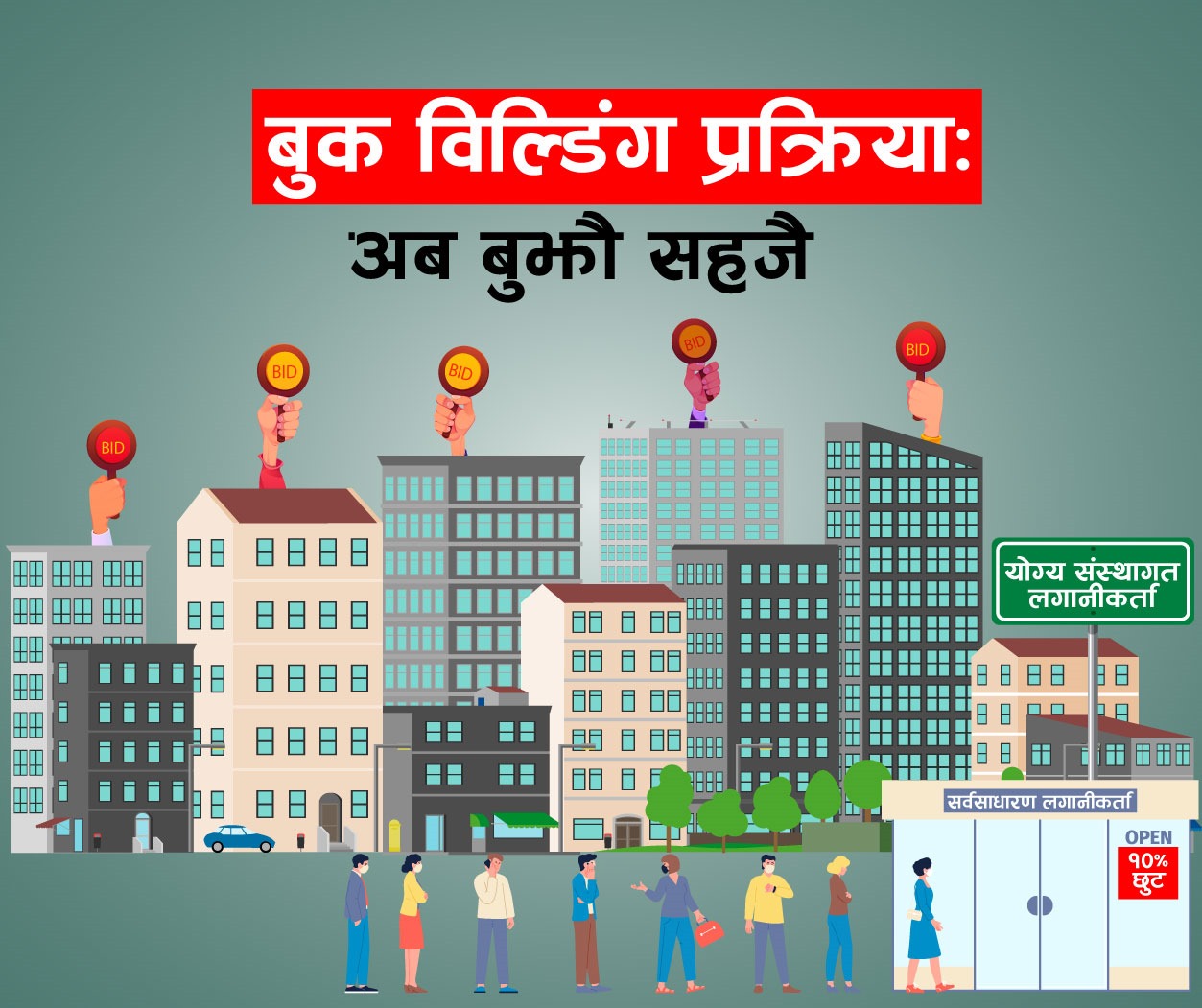A Simplified Guide to Book Building Method
A Simplified Guide to Book Building Method
Stock Market

Ideapreneur Nepal
Created on :
2023-11-27
Download our app for a smooth experience
Total Views:
364 views

Sarbottam Cement is employing the book-building process for the issuance of its initial public offering (IPO). This marks the inaugural instance of a Nepali company opting for the book-building method to introduce its primary shares to the market. As this marks the debut issuance, investors are showing increased interest in the book-building process. However, there is a bit of confusion among investors about the method and how the process works.
Let's clear up any confusion and delve into a comprehensive understanding of the process. Before diving into details, let's ensure we have a simple understanding of what book building really means.
What is Book Building Method?
Book building is the method by which a company discovers the value of its shares during the initial public offering (IPO) launch. Serving as a price discovery mechanism, this process ensures a fair issuance of IPOs, encouraging increased involvement from both institutional and retail investors. In accordance with the Book Building Directives of 2077 issued by the Securities Board of Nepal (SEBON) "Book building method" means a price determination method and procedure of securities in the initial public offering by a body corporate.
In this process, the company enter into an agreement with an issue and sales manager. The company, in consultation with the issue and sales manager prepares the initial prospectus and extends invitations to institutional investors to submit bids. In this approach, shares are not set at a fixed value but rather within a specified price range. For instance, Sarbottam Cement follows this practice with a price band set at Rs. 401-601.50 for Qualified Institution Investors (QIIs) to submit bids.
Key Terms Used in Book Building Process:
Before understanding the process, it's important to know the key terms that come up often in this process.
Base Price: The base price is determined for securities by reviewing the intent price received from qualified institutional investors. Following the establishment of the base price, the threshold price for securities is then decided.
Ceiling Price: It is the highest limit for the threshold price, defining the upper boundary at or below which qualified institutional investors can submit bids for shares. For example, in a price range of Rs 401-601, the ceiling price would be Rs 601.
Floor Price: It denotes the minimum price threshold for submitting bids in an IPO. Using the previous example, the floor price would be Rs 401.
Cut-off Price: It's the minimum selling price determined after qualified institutional investors place bids. If a bid is below the cut-off price, the investor won't be allocated securities.
Now we have a basic understanding of book building method and key terms involved in the book-building process. Now, let's take a closer look at the Book Building Process in Nepal and understand how it actually operates.
Book Building Process in Nepal
The Book Building Directives of 2077 outline the specific procedures to be followed in conducting the book building IPO issuance. As per the directives, the procedure for book building will unfold in the following manner:
1. Appointment and Agreement with Issuing and Sale Manager:
In adherence to the directives, a corporate entity seeking to issue securities through the book building method must enter into an agreement with an issue and sale manager licensed by the Board for the completion of the works as per this method.
2. Creation of Initial Prospectus, Conduct Discussion and Receive Intent Price:
A corporate entity is obligated to engage in collaborative consultation with an appointed issue and sale manager to prepare an initial prospectus. Subsequently, the corporation is mandated to conduct a discussion program centered around the initial prospectus by inviting qualified institutional investors. During this, the corporation is to seek feedback from qualified institutional investors regarding the initial prospectus, including minimum numbers to be purchased, intent price and its valuation method with the support of an issue and sale manager.
3. Determine Threshold Price and Submit Application to the Board:
The entity is required to set the base price of securities after reviewing the intent price received from qualified institutional investors. Subsequently, the determination of the threshold price for securities will follow the establishment of the base price. The upper threshold price is calculated by adding 20 percent to the base price, and the lower threshold price is determined by subtracting 20 percent.

An application must then be submitted to the Board specifying threshold price along with a prospectus for the registration and issuance of securities through the book-building method.
4. Following Approval, QIIs Are Invited to Submit Formal Bids:
The issue and sales manager must publish an offer document, calling upon all qualified institutional investors to participate in a bidding process. The qualified institutional investors then submit applications for the purchase of securities within the threshold of selling price. Qualified institutional investor may submit a bid offer not exceeding 20 percent than the total securities issued.
5. Cut-off Price Determination and Share Allotment to QIIs:
To determine the cut-off price for securities issued for qualified institutional investors, the stock exchange will assess and set this price. The selection of successful bidders will then commence, prioritizing bids from the highest to the cut-off price, representing the minimum amount for which shares will be sold. If the bid price from a qualified institutional investor is lower than the cut-off price, the allocation of securities will not be granted to that investor. In situations where the available securities are insufficient to fulfill all applicants' requests at the cut-off price, allotment will occur on a pro-rata basis.
6. Public Issuance at 10% Below Cut-off Price:
Upon determining the cut-off price and allocating shares to qualified institutional investors, the entity proceeds to issue securities to the general public, offering a 10 percent discount from the cut-off price, which marks the minimum price at which shares were sold to qualified institutional investors. Throughout the securities allotment process, each applicant is entitled to a minimum allocation of fifty shares.
Now, we have a clearer understanding of the entire book-building process and you might be curious about how the determination of the cut-off price takes place. So, let's take a closer look at how the cut-off price is determined, using an example for clarity.
Example of Cut-Off Price Determination in the Book Building Process:
As an illustration, consider the book building process if XYZ Company plans to issue shares. If the qualified institutional investors are allocated 10,00,000 shares, and applications are received through a bidding process, the cut-off price will be determined based on the table provided below.
 Conclusion
Conclusion
The adoption of book building method in share issuance facilitates the price discovery process by encouraging active participation from both institutional and retail investors. This methodology not only facilitates companies in raising significant capital but also improves transparency and competitiveness through the integration of a bidding system. Particularly in the context of Nepal, this approach is likely to encourage real sector companies to enter into the capital market. However, for individual investors, there could be a financial challenge in applying for shares above the face value and meeting the minimum requirement of at least fifty units. The limited availability of funds for small investors may pose an obstacle, potentially reducing their enthusiasm for applying the book building IPO. Yet, there is encouraging side, the book-building process is not mandatory and a significant number of companies will still choose to issue IPOs at a par value of Rs. 100.
What are your thoughts on this emerging mechanism? Are you hopeful that this system can contribute to a more efficient market? Share your views with us in the comments section below.
Tags:
Book Building
Cut-off Price
Threshold Price
Book Building
Cut-off Price
Threshold Price
Leave a comment on this post
Comments
Mohan Newar
नेपाली बाट पढ्न पाई दै सर 🙏
Balaram Kumal
Nepali ma pane reading garna melne système baauna paro Hajur🙏
Pawan Rai
actually i studied in government school 😷😒☹️
Anil Sah
Sir Nepali ma pani padna milna banaunu paryo
Harichandra Chaulagain
नेपाली भाषामा चैं सबैले बुझ्छन् होला त !!!
Sabin Basnet
First of all, thank you so much for in detailed explanation. Yes this method could be advantageous for the developing country like ours. But due to our unstable economy, this could be somewhere challenging as well. If properly executed, this could increase investor. This is what I understand from the above.
Ruben Das
Nepali bhasa ma banauna laai . 1) aafno arko mobile ma google open garnuhos .2) tes paxi language translator search garnuhos 3) after that you will get there camera option 4) ani tyo google ko translate camera lai yo lekh ko mathi rakhera herunos . 😆 Sayad it will work
Ramakant Chaudhary
Thankfully for information.
Ang
thanks for the information ..great work
Bhim Magar
Nepali ma. Vya. Sagilo hun theo. Sir
Amis Adhikari
Nepali ma article chaiyo hajur
Dabal Kunwar
Tesaile school ma ramrari padhnu parx 😂 nepali lovers ❣️
Manish Bhatta
Toop aayo tah🌸
Subas Acharya
Nepali language Dekhi grnu vo vane best huntheyo sir
Suman Manandhar
Option nepali bata padhna Milne ni huna paryo. sabai Janale English bujhna sakdaina ni hoina ra ?? English ra Nepali duitai bata herna Milne garidinu vaye ramro hunthyo
Madan Muna
यो अङ्ग्रेजी छाट्नु भन्दा नेपाली मा लेख्नु नि
Be
Book audio xaina padna jheuu lagxa sunna majja lagxa
Amir Tamrakar
Yo app Nepali harule chalaune ho sabai news latter haru Nepali language mai rakhnu bhaye ramro hune thiyo english mai padhne bhaye ta dherai aru source haru pani cha ni.
Khemraj Bishwokarma
Feedback comment haru hereraa reply diye hunthyo
Basant Karki
TEST
Basant Karki
TEST

Related Article

Finance
Reading time : 12 mins
सेयर धितो कर्जा जता जता; बजार त्यतै त्यतै !!

Finance
Reading time : 7 mins
Are you Revenge Trading? STOP NOW !!!

Finance
Reading time : 5 mins
Desperation Leads to Destruction: Here’s How ?

Finance
Reading time : 8 mins
Struggling to make Buy/Sell Decisions? You might have Analysis Paralysis !!!

Finance
Reading time : 15 mins
बाहिरियो ‘आजियाटा’ : लगानीको वातावरण खराब कि नियत ?

Finance
Reading time : 7 mins
बुक विल्डिंग प्रक्रिया : अब बुझौ सहजै

Finance
Reading time : 10 mins
Should You Get A Credit Card?

Finance
Reading time : 7 mins
Zero to Million - Yes it's Possible !

Finance
Reading time : 17 mins
नेप्से: अनि उकाली - ओराली

